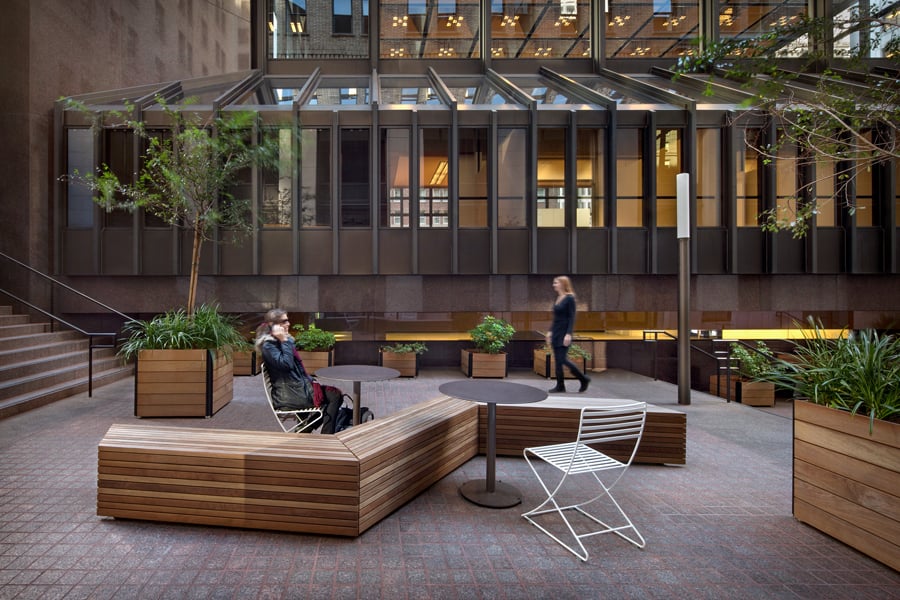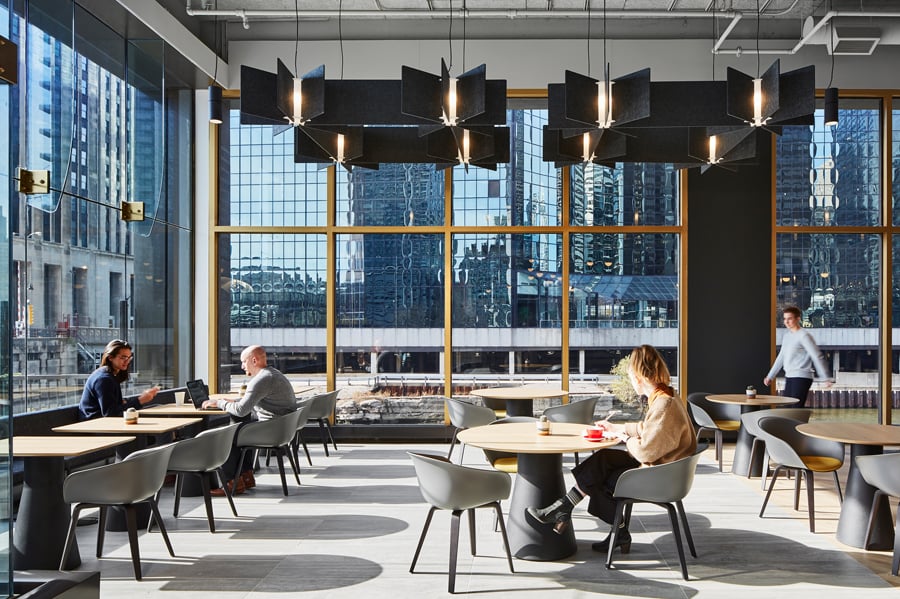
October 14, 2020
Evolving Communal Spaces
How the pandemic is and is not shaping the future of workplace amenities.

On September 10, a virtual Metropolis Think Tank session brought together four experts in office design and real estate to discuss the future of communal spaces in and around buildings. With COVID-19 having proven the efficacy of working from home, the panel discussed exactly how a workplace’s amenities should function and look—with the user’s experience being a priority.
“Going from street to suite should be seamless and pleasurable,” said Andrew Volckens, associate principal at Huntsman Architectural Group, the host of the webinar. “For our communal areas, we’ve started to take cues from hospitality—soft seating and coffee bars in the lobby, for example. In the past, lobbies were like marble bunkers—with multiple security guards eyeing you and seeming to ask what you are doing there. Now the building has to be a sanctuary, a destination—with security, yes, but with a welcoming feel.”
https://vimeo.com/466231150/d4b52e1435
The COVID-19 pandemic has changed what it means to feel safe and secure in a building, but it hasn’t changed the fact that human beings are social animals.
“The challenge becomes how can we enhance the experience of these spaces?” asked Gideon D’Arcangelo, associate principal and experience designer at Arup. He added that in the COVID era, “our clients are interested in indoor air quality, cleaning status, what has been sanitized—stuff you just took for granted before.”
Stephen Sise, senior vice president, portfolio management with Golub & Company, a real estate manager and developer, offered some practical ideas about shared space: “We’re trying not to overreact. We’re being cautious. Indoor air quality is important whether or not there’s a pandemic. It’s important that tenants know how a building is performing at any given time.” There are data and “dashboards” in buildings, he added, advising tenants of current conditions as to air quality, temperature and energy efficiency.

Another priority is the increased interest in creating outdoor spaces in office buildings, where socializing carries a lower risk of COVID transmission.
“I love the idea of creating more permeable boundaries between outdoors and indoors,” said Arup’s D’Arcangelo. “Socially it’s so important. We take these formerly private spaces and give them a public component.”
“At architecture school we had to step out of the box,” concluded Karie Vagedes, senior associate at Huntsman. “We’re doing that here. We’re coming up with new ideas to improve indoor and outdoor spaces and make everyone feel welcome.”
The Think Tank discussions were held on September 1, 10, and 17. The conversations were presented in partnership with Hunter Douglas, Material Bank, Versteel, GROHE, and KI.








